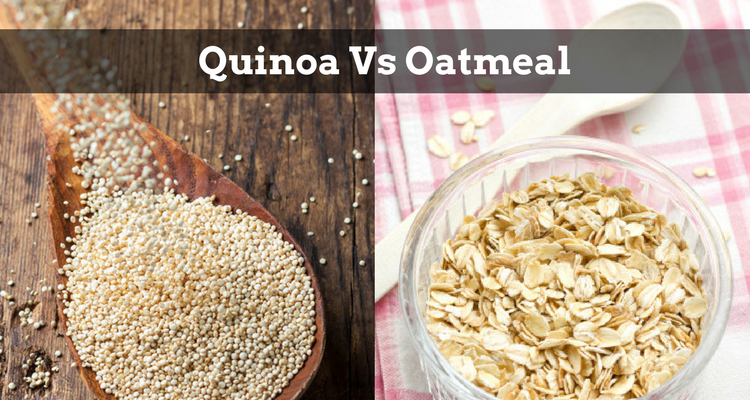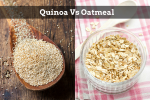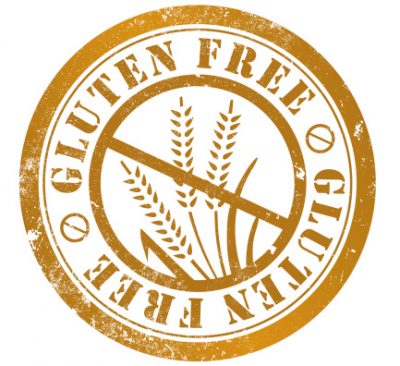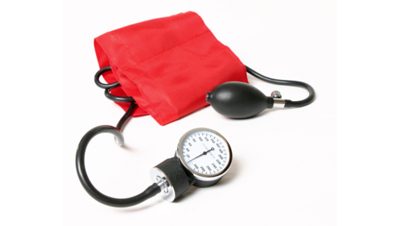
Quinoa is the seed of a plant scientifically known as Chenopodium quinoa, and is usually pale yellow in color. Not technically a grain, this flat and oval-shaped superfood is full of nutrients, and it’s nutritional composition is similar to most whole grains. We have compiled a quinoa vs oatmeal comparative analysis between their nutrition content, as well as their health benefits.
According to an article published in Thermochimica Acta, quinoa has more nutrients than any other grain. Quinoa has a nutty taste, and is a gluten-free food that can be substituted for wheat and rice. It is a considered a complete food because of its protein content.
Quinoa vs Oatmeal Nutrition Facts
A serving size of 100 grams of quinoa contains around two grams of fat, while oatmeal contains about seven grams. However, the fats contained in oatmeal are healthy fats that include 111 milligrams of omega-3 fatty acids, and 2,424 milligrams of omega-6 fatty acids. The fat content in quinoa mainly consists of oleic acid, palmitic acid, and linoleic acid.
How do the Calories match up?
Oatmeal has more than three times the calories than quinoa. A 100 gram serving of quinoa contains 120 calories, while the same serving of oatmeal contains 389 calories. Also, most of the calories in oatmeal come from carbs including sucrose, starch, and dietary fiber. Meanwhile, the calories in quinoa mainly come from protein, dietary fiber, and starch.
Quinoa vs Oatmeal Carbs and Protein Content
Oatmeal contains three times the amount of carbohydrates than quinoa. Oatmeal has a total of 66 grams of carbohydrates, which include 10 grams of dietary fiber for a serving of 100 grams. The same serving of quinoa, on the other hand, has around 21 grams of carbohydrates with three grams of dietary fiber. The carbs in quinoa mostly consist of insoluble fibers, starch, and small amounts of sugars.
Quinoa has less proteins compared to oatmeal—quinoa has four grams and oatmeal has 17 grams. Quinoa is considered a complete protein source as it provides all the essential amino acids. It has a good amount of an amino acid called lysine, which generally isn’t present in plant-based food sources. Lysine is present in oats as well. Other important amino acids such as proline and methionine are present in both foods. The quality of proteins in oats are just as good. According to a study published in the Czech Journal of Food Sciences, the protein efficiency ratio (PER) in cooked quinoa is 102% to 105% to that of casein, a high-quality protein found in dairy products.
Difference in Glycemic Index
The glycemic index of a food ingredient depends on its ratio of dietary fiber and sugars. Low-fiber and high-sugar foods have a high glycemic index, which result in a spike in blood sugar levels after a meal.
Quinoa has a glycemic index of 53 for a 150-gram serving, while that of oatmeal is 55 for a 250-gram serving. Thus, both grains don’t cause a major spike in blood sugar after consumption.
Quinoa vs Oatmeal Sodium Content
Quinoa has seven milligrams of sodium per 100-gram serving, while oatmeal has two milligrams. However, when buying oats, you should be wary of added sodium chloride and sugar. It is always better to buy plain, unflavored oats.
Comparison in terms of Mineral Content
Quinoa has good amounts of iron and calcium, and provides two percent and eight percent of the recommended intake of calcium and iron respectively. It also has good amounts of magnesium, manganese, and phosphorus—about 16%, 32%, and 15% respectively. The other minerals in quinoa include copper, zinc, selenium, and potassium.
Oatmeal contains five percent calcium, 26% iron, and the amounts of magnesium, manganese, and phosphorous are 44%, 246%, and 52% respectively. Oatmeal has good amount of potassium, zinc, and copper compared to quinoa. So, more or less, both grains have similar minerals with slightly different proportions.
Quinoa vs Oatmeal Vitamin Content
Quinoa provides three percent of the recommended daily intake of vitamin E, six percent vitamin B6, seven percent thiamin, six percent riboflavin, 10% folate, and two percent niacin.
Oatmeal doesn’t contain vitamin E, but contains six percent vitamin B6, 51% thiamin, eight percent riboflavin, 14% folate, and five percent niacin. Avenanthramides is a unique group of antioxidants found only in oats. Oats also contain trace amounts of vitamin K, which is not present in quinoa.
Quinoa vs Oatmeal Health Benefits
Here are eight health benefits of quinoa and oatmeal.
1. Lowers cholesterol
According to a study published in The American Journal of Clinical Nutrition, oats are effective in lowering LDL and total cholesterol by 0.25 millimoles per liter (mmol/L) and 0.30 millimoles per liter respectively. Oats don’t affect HDL cholesterol or triglycerides. On the other hand, quinoa, being high in soluble fiber, also helps lower bad cholesterol.
2. May help in weight loss
Fiber is known as an effective element for weight loss. Oats have a good amount of fiber, which helps you feel full for a longer period of time, keeping hunger at bay. This prevents weight gain from snacking on unhealthy foods.
Oats and quinoa both have good amounts of proteins. According to a study published in Regulatory Peptides, proteins boost metabolism, increase satiety, and thus help in weight loss. Both foods have a medium glycemic index and many nutrients.
3. Are gluten-free
Quinoa is a good option for gluten-intolerant people, or those who suffer from celiac disease. Substituting quinoa or oats with other gluten-free options, increases the oxidant and nutrient value of the diet according to research done at Columbia University Celiac Disease Center.
Although oats don’t contain gluten, they contain a similar protein called avenin. Oats are naturally gluten-free, but they may get contaminated with wheat during the packaging process. Therefore, celiac patients are advised to eat only those oats that have been certified as “pure” or “gluten-free.”
4. Reduces the risk of asthma
According to a study published in The British Journal of Nutrition, feeding oats to infants less than six months old results in a reduced risk of asthma. According to The International Study on Allergy and Asthma in Childhood, regular consumption of whole grains like quinoa, can cut down the probability of childhood asthma by 50%.
5. Improves metabolic health
Quinoa boosts metabolic health compared to gluten-free breads and pastas. It reduces blood sugar, insulin, and triglycerides. Oats also help to improve the metabolic rate, and are known to normalize blood sugar levels.
6. May reduce the risk of cancer
Antioxidants in quinoa, such as quercetin and kaempferol, may reduce the risk of chronic diseases like cancer. Researchers in Britain and the Netherlands found that a high-fiber diet consisting of whole grains like oats, lowers the risk of colorectal cancer.
The findings have been published in the British Medical Journal. Consuming oats may also help to reduce the risk of cancer. According to the Journal of Food Science and Technology, oats have hypocholesterolemic and anticancer properties.
7. Lowers blood pressure
An article published in The American Journal of Clinical Nutrition, states that regularly consuming whole grains like oats, may create an effect equal to any antihypertensive medication prescribed to lower blood pressure. Both quinoa and oats have potassium, which helps reduce high blood pressure. The magnesium present in quinoa and oats also helps reduce blood pressure naturally by inducing blood vessel dilation.
8. Protects against heart diseases
Consuming whole grains like quinoa and oats may reduce the risk of heart diseases. A study published in the American Journal of Lifestyle Medicine states that consuming foods rich in whole oats, such as oat bran and oat flour, may reduce the risk of coronary heart diseases.
According to a study published in Nutrition Reviews, oatmeal contains more than 20 unique polyphenols and avenanthramides. These polyphenols show anti-inflammatory and anti-itching activity that protect against heart diseases and skin irritations. Avenanthramides are powerful antioxidants which reduce arterial inflammation.
Quinoa and oats can be consumed in a number of ways. Quinoa can be added to thicken soups, consumed as a porridge, added to salads, or eaten as a side dish.
The seeds can also be popped like popcorn, or ground and used as a flour. Oats can be used in making breads, cookies, biscuits, probiotic drinks, breakfast cereals, and flakes. You can have oats in the form of instant oats, which cook faster.
When comparing quinoa vs oatmeal for bodybuilding, oatmeal has more carbs and proteins than quinoa, but it is higher in calories, too. After the quinoa vs oatmeal comparison, we can say that oatmeal has a larger ratio of vitamins and minerals than quinoa; however, both foods have almost the same vitamins and minerals.
Both the foods have their own health benefits. Comparing them only in terms of nutritional value doesn’t suffice, as there is much benefit beyond that, which needs more research. You can safely include both foods in your diet, and preferably have them for breakfast. Having the same cereal every day of the week would be boring anyway. You can also include eggs, fruits, nuts, and other nutritious foods on the remaining days in a week.
Related:
- Quinoa vs Rice: Which Is More Nutritious?
- Cream of Wheat vs Oatmeal: Which Is More Healthy?
- Porridge vs. Oatmeal
Sources:
“Nutritional advantages of oats and opportunities for its processing as value added foods – a review,” US National Library of Medicine; https://www.ncbi.nlm.nih.gov/pubmed/25694675, last accessed March 29, 2017.
“Quinoa: composition, chemistry, nutritional, and functional properties,” US National Library of Medicine; https://www.ncbi.nlm.nih.gov/pubmed/19878856, last accessed March 29, 2017.

















